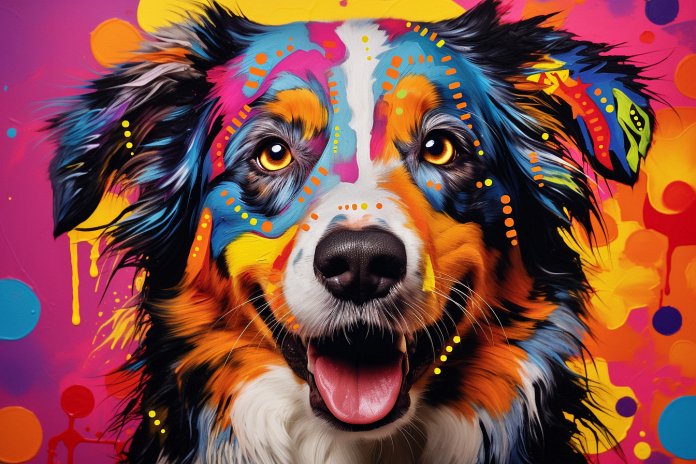
Have you ever noticed that some dogs seem to prefer women over men, while others respond more to men than women? Some dogs growl and shake when a man enters the room, while others are completely bonded to their male owners but not as responsive to women in the family. Owners often say things like “My dog only likes women” or “My dog is a man’s dog.” Could it be that dogs can really tell the difference between men and women?
Signs Dogs Can Differentiate Genders
Dogs are social creatures and can pick up on cues from humans and other animals. They communicate through their own signals, indicating excitement, happiness, sadness, fear, or aggression. Understanding dog behavior and being aware of their body language is crucial for maintaining a safe and positive environment.
When it comes to dogs differentiating genders, signs to look out for include friendly or fearful behavior towards humans. Fearful dogs may exhibit avoidance behaviors like running away and hiding, or aggressive behaviors like growling and baring their teeth. It’s important to recognize these signs and take steps to separate the dog from the person or situation causing distress.
On the other hand, if a dog is attracted to someone, they will show signs of positive energy such as excitement, rubbing against the person, sniffing, and nuzzling. Some dogs may even urinate out of excitement. A friendly person may receive an invitation to play from the dog, with the dog stretching its front legs and raising its hind legs in a play-bow position. Friendly yelps, barks, smiles, and happy-drool may also be observed.
Body Language
Body language signs that indicate a dog senses differences in people include growling, barking, shaking, cowering, and exposed teeth. Additionally, dogs may show a preference for one gender by staying close to only one gender of person.
The History of Dogs Telling Human Gender
Many people assume that when dogs act fearfully towards certain people, it’s because the dog was abused. However, all dogs go through natural periods of fearfulness during development. How a dog is trained and managed during these stages can influence their adaptability. While dogs may appear fearful of certain genders, they could be responding to other triggers such as movements or personal attributes.
When it comes to children and dogs, experience and temperament play a role. Children can be loud and unpredictable, which may intimidate dogs. By observing a dog’s reactions, owners can identify triggers and implement training and management strategies to make their pet more adaptive.
The Science Behind Dogs Telling Genders
Researchers have investigated how dogs recognize human gender based on sensory modalities. They discovered that dogs who lived with multiple owners had better gender discrimination abilities than those with only one owner. Dogs learn from their social experiences, and their ability to distinguish between genders depends on previous exposure to men and women.
Training a Dog to Respond Well to Both Genders
If your dog is afraid of a particular gender, there are techniques to help them overcome their fears. Fears are learned, so by gradually introducing the fearful stimulus and pairing it with positive associations, you can reduce anxiety and create new adaptive behaviors. Desensitization and counter-conditioning are methods used in training to achieve this.
One training game called Peek-A-Boo involves having a familiar, non-threatening person say the phrase and throw the dog a treat multiple times a day. Over time, the dog will associate the phrase with receiving a treat. Then, the feared person can say the phrase while the familiar person throws the treat. This process is gradually repeated until the dog feels comfortable with the feared person’s presence.
“In a world where dogs can sense fear, they can also discern between genders.”

Tips & Things to Know
1️⃣ Be aware of your dog’s body language: Pay attention to the signs of distress or fear in your dog’s body language, such as shaking, hiding, growling, or exposing teeth. This will help you understand when your dog is uncomfortable or fearful around certain people.
2️⃣ Understand triggers and take precautions: Dogs may have preferences for one gender over another due to various triggers, such as different gaits or physical features. Identify these triggers and take precautions to ensure your dog’s safety and comfort, such as separating them from the triggering person or situation.
3️⃣ Use desensitization and counter-conditioning techniques: If your dog is fearful or anxious around certain genders, you can help them overcome these fears through desensitization and counter-conditioning. Gradually expose your dog to the feared stimulus while pairing it with positive experiences, such as treats or play. This can help reduce their anxiety and create new adaptive behaviors.
Frequently Asked Questions, Answered ✅
1. How can dogs differentiate between men and women?
– Dogs can pick up on cues from humans and other animals, including body language and voice tones, which help them differentiate between men and women.
2. What are some signs that indicate a dog is fearful of a specific gender?
– Signs of fear in dogs may include shaking, cowering, growling, barking, exposing teeth, and hiding.
3. What are some signs that indicate a dog is attracted to a specific gender?
– Signs of attraction in dogs may include excitement, going towards the person, rubbing against them, sniffing and nuzzling, and sometimes even urinating out of excitement.
4. Can dogs tell the gender of a person based on their voice?
– A study found that dogs can discern the appropriate match of voice and gender, with dogs living with three or more people having better gender discrimination ability.
5. How can owners help their dogs overcome fears of specific genders?
– Owners can use desensitization and counter-conditioning methods to gradually introduce the feared stimulus and pair it with positive associations, helping to reduce the dog’s anxiety and create new adaptive behaviors.